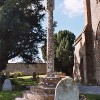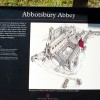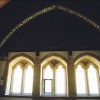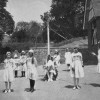Monkton Wyld
Monkton Wyld
Hidden away in the wooded hills and valleys about three miles north of Lyme Regis on the border with Devon is the area of Monkton Wyld. The land here was once owned by the monks of Forde Abbey (Monkton means “of the monks”). Wyld is from the Old English word ‘wil’ meaning a ‘wile’ or a ‘trick’ and is probably a reference to a trap – the cover afforded by the woodland makes for a landscape favoured by poachers. In bye-gone days this was a manor.
Work started on the church in 1848 and although it was consecrated in 1850 the 120 foot spire was not completed until 1856, a year after its architect, Richard Cromwell Carpenter, died. The Church is dedicated to St. Andrew. Carpenter was a member of the Cambridge Movement who revered the decorated Gothic style and claimed it was the only style suitable to the worship of God. This theory became known as Ecclesiology and St Andrew’s is an excellent example of the style, which accentuates the beauty of holiness, the saints and religious symbolism.
Entrance to the church grounds is through a lynch-gate and a yew tree lined pathway leads to the south porch, which is of wood with open sides and decorated with small columns. The church is built of flint with dressings of Caen stone. Unusually, we find a chancel inside with a painted ceiling that is almost as long as the nave and set apart from the side aisles by three bay arcades. There is a central tower topped with a 120 foot-high spire, supported by Gothic arches.
The wooden decorated rood screen, its brass gates, the brass communion rail and the choir stalls, were all added by the Revd. John Brook Maher Camm, the third incumbent. There is a beautiful oak pulpit with a base of Mansfield stone and Devon marble, and a painted organ of 1872. In 1875 five excellent stained glass windows by G.E. Cook and Powell’s of London were installed.
The expense of building the church as well as a rectory, school and schoolmaster’s house, was borne by Mrs Elizabeth Dodson (1798-1883). She was the widow of Charles Phillip Dodson of Stainly Hall, Yorkshire. Mrs Dodson’s only surviving child, her daughter Frances, was married to the Revd. Robert Sparke Hutchings, who was appointed the first incumbent at Monkton Wyld.
There is a story that explains the unusual name of Hutching’s successor, The Revd. Lester Lester. It seems this gentleman was left a legacy but there was a condition attached to the inheritance: he must change his name to Lester. Being uncertain about whether he was to change his given name or his surname he decided to play it safe and change both his names.
This is a thinly populated area made up of farms but with no central village community. It is difficult to see the need for a church here even in the mid-19th century, but those were days when rich landowners and farmers could instruct their employees to support the church. Nowadays, the church is usually locked and you will have to ask for the key to enjoy its interesting interior.




